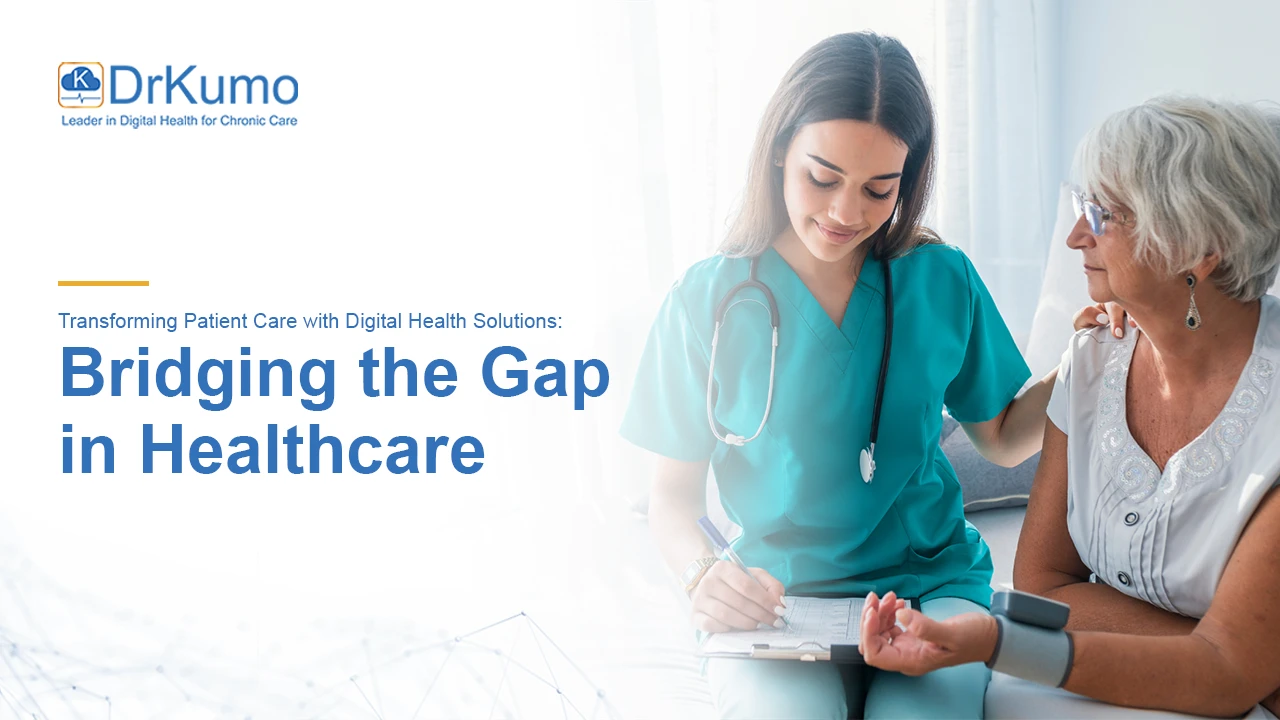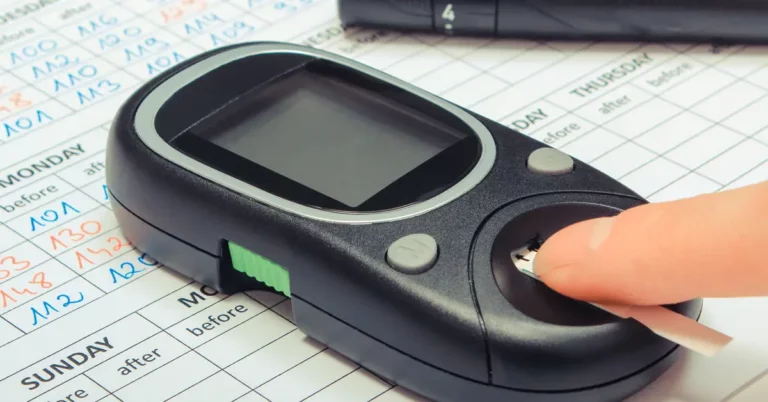Healthcare is undergoing a rapid transformation, necessitating that both patients and providers adapt to new challenges in care delivery. As barriers such as distance, time, and limited resources persist, the need for innovative solutions has never been more critical. Consider a paradigm shift where high-quality healthcare is delivered outside of conventional hospital and clinic infrastructures.
This is where digital health solutions come into play—a revolutionary approach that is reshaping the healthcare landscape. With the seamless integration of Remote Patient Monitoring (RPM), telehealth services, and other remote healthcare technologies, geographical limitations are becoming a thing of the past. These innovations are not merely tools; they represent the future of healthcare, providing essential support for patients and enabling providers to deliver continuous, personalized care from virtually anywhere.
The ability to monitor vital signs in real time, identify potential health issues before they escalate, and provide responsive care is truly transformative. Digital health technologies empower patients to take charge of their health while ensuring that healthcare providers remain informed and connected. The outcome? More efficient care delivery, fewer hospital visits, and improved patient outcomes—healthcare that operates smarter, not harder.
This article explores how integrating remote patient monitoring and telehealth solutions can revolutionize patient care, enhance engagement, and ultimately bridge the gap in healthcare accessibility and quality.
The Rise of Digital Health: A Solution to Healthcare Inequity
While the healthcare industry has seen substantial progress, disparities in access to quality care remain a persistent challenge, particularly for rural and underserved communities. Statistics show that approximately 57 million Americans live in areas with limited access to primary care physicians, highlighting the need for innovative solutions to bring care to these populations. Digital health monitoring, including RPM services and telemedicine monitoring, is an effective way to address this gap.
Remote health tracking through RPM technology enables real-time patient health monitoring, ensuring that individuals managing chronic conditions like diabetes, hypertension, and heart disease receive timely interventions. A study published in IEEE Access found that RPM can lead to a 30% reduction in hospital admissions and a 25% decrease in emergency room visits for patients with chronic diseases. These statistics underscore the critical role of RPM in enhancing patient engagement and facilitating proactive healthcare management, ultimately improving outcomes for those with chronic conditions.
The Digital Divide in Healthcare
Despite the advancements in healthcare technology, a gap still exists between those who can access cutting-edge healthcare services and those who cannot. For example, rural areas often face connectivity issues, limiting access to virtual care. This disparity, often referred to as the “digital divide,” is particularly evident in rural and low-income communities, where limited access to healthcare resources and technology exacerbates health inequalities. Digital health solutions, however, offer a promising way to bridge this divide.
Companies at the forefront of transforming patient care are introducing technologies that enhance connectivity and accessibility in healthcare. Remote patient monitoring (RPM) solutions empower patients to manage their health from home, reducing the need for frequent hospital visits. This technology brings care closer to the patient and offers healthcare providers real-time insights into a patient’s health, enabling early intervention and personalized treatment plans.
How Digital Health is Revolutionizing Patient Care
Digital health is fundamentally transforming patient care by integrating technology into healthcare delivery. This revolution enhances accessibility, improves monitoring, and fosters better communication between patients and providers. As we explore the various ways digital health is reshaping the landscape, we will highlight key innovations that are making healthcare more efficient, personalized, and proactive.
Remote Patient Monitoring (RPM)
RPM technology has revolutionized the way healthcare providers monitor and manage chronic conditions such as diabetes, hypertension, and heart disease. According to Strategic Market Research, to manage chronic health disorders, 75% of clinicians in both urban and rural areas utilize some form of remote patient monitoring (RPM). In the U.S., four out of ten individuals have two or more chronic diseases, while six out of ten adults have at least one chronic condition. These statistics highlight the significant role that RPM can play in managing chronic illnesses and improving patient outcomes.
By enabling remote health data tracking, RPM facilitates effective illness management and early diagnosis of potential problems. Patients can use wearable devices and mobile apps to monitor their vital signs and send data directly to healthcare providers. This continuous monitoring allows for timely interventions, improving patient outcomes and reducing hospital readmissions. DrKumo’s RPM solutions are an excellent example of how technology can facilitate better communication between patients and providers, ultimately leading to more proactive care.
Artificial Intelligence and Data Analytics
The integration of artificial intelligence (AI) and machine learning into healthcare systems is another game-changer. By analyzing large volumes of health data, AI-powered tools can help healthcare providers make more informed decisions. These technologies can predict health trends, identify high-risk patients, and optimize treatment plans. DrKumo’s use of AI in analyzing patient data provides clinicians with actionable insights, enabling them to deliver precision medicine tailored to each individual’s needs.
Telemedicine and Virtual Care
Telemedicine has gained immense popularity, especially in the wake of the COVID-19 pandemic. Virtual consultations have become a preferred method of care for many patients, offering convenience and flexibility. Digital health platforms provide a secure environment for virtual appointments, allowing patients to consult with their doctors without having to leave their homes. This not only saves time but also makes healthcare more accessible to those in remote areas.
Enhanced Patient Engagement
One of the key benefits of digital health solutions is their ability to engage patients in their own healthcare. Through mobile apps, patients can access educational resources, set health goals, and receive reminders for medications or appointments. This increased engagement leads to better adherence to treatment plans and ultimately better health outcomes. DrKumo’s patient-centric approach encourages individuals to take an active role in their health, fostering a stronger partnership between patients and healthcare providers.
Bridging Healthcare Gaps with Connected Technology
Innovations in healthcare are increasingly focused on making systems more efficient and equitable. By providing solutions that enable patients to access quality care regardless of their geographical location or socioeconomic status, the industry is helping to close the healthcare gap. Cutting-edge technologies ensure that patients in underserved communities receive the same level of care as those in more affluent areas.
Incorporating connected health technology into patient care enables continuous, real-time monitoring and communication between patients and healthcare providers. This approach reduces the burden on healthcare facilities while improving the overall patient experience. The ability to deliver personalized care remotely ensures that individuals receive timely interventions and follow-ups, particularly those managing chronic diseases through structured disease management protocols and chronic care management strategies. These methodologies not only enhance patient engagement but also facilitate better health outcomes by ensuring that care is tailored to individual needs.
The Future of Digital Health
The potential of digital health solutions to transform healthcare is immense. As the healthcare industry continues to embrace technological advancements, we can expect even more innovative solutions that will further bridge the gap between patients and healthcare providers. The future of healthcare is patient-centric, data-driven, and highly connected, and is leading the charge in this transformation.
By addressing the digital divide and improving access to quality healthcare, digital health solutions have the power to revolutionize the industry. With continued innovation and widespread adoption, these technologies will ensure that patients, regardless of their background or location, can receive the best possible care.
Remote Patient Monitoring: Transforming Chronic Care Management
Chronic care monitoring has seen dramatic improvements with the advent of remote medical monitoring. By using home monitoring devices such as wearable RPM devices, patients can monitor vital signs like heart rate, blood pressure, glucose levels, and more. These RPM devices send data directly to healthcare providers through remote monitoring programs, enabling continuous oversight and proactive care without the need for frequent in-person visits.
Remote vital signs monitoring and patient health monitoring systems are also instrumental in chronic care management, providing healthcare providers with up-to-the-minute data. A 2020 study from the University of Pittsburgh demonstrated that utilizing remote patient monitoring (RPM) led to a 76% decrease in readmissions.
This real-time connectivity allows for earlier detection of potential health risks, giving clinicians the ability to intervene before conditions worsen. For patients managing chronic illnesses, this can significantly improve quality of life, reduce emergency room visits, and even extend life expectancy.
Benefits of Remote Health Solutions: Accessibility and Cost Savings
- Enhanced Accessibility: Remote healthcare monitoring improves access to care, particularly for those in remote locations. By utilizing Telehealth RPM and virtual patient monitoring, patients can receive high-quality care without having to travel to a clinic or hospital. This has been particularly valuable during the COVID-19 pandemic, where remote care technology became a lifeline for many.
- Cost Savings: Remote care monitoring reduces healthcare costs by minimizing hospitalizations and emergency room visits. A study published in the JAMA Internal Medicine found that implementing remote patient monitoring can lead to a 20% reduction in hospitalizations and a 30% decrease in emergency department visits among patients with chronic conditions.
- Increased Patient Engagement: Wireless health monitoring devices give patients greater control over their health by allowing them to monitor their progress in real time. This level of engagement leads to better adherence to treatment plans, improving overall health outcomes.
- Improved Clinical Decision-Making: Healthcare providers using connected health monitoring systems have access to more comprehensive patient data, allowing them to make informed decisions faster. This results in personalized care tailored to the unique needs of each patient.
Innovations in Telehealth Monitoring: A Look into the Future
As remote health management continues to evolve, the role of remote care technology will only expand. According to MarketsandMarkets that by 2025, the global market for remote patient monitoring will exceed $117 billion, driven by advancements in remote medical devices and the growing demand for home health monitoring solutions.
Telemedicine monitoring is also becoming a standard part of routine care. According to a report from McKinsey, telemedicine usage increased by 38 times compared to pre-pandemic levels, showing that patients and providers alike are embracing this convenient and effective method of care delivery.
Looking to the future, companies like DrKumo are leading the way in developing cutting-edge digital patient monitoring tools and remote monitoring services. By integrating artificial intelligence, machine learning, and cloud-based platforms, these technologies are pushing the boundaries of what is possible in healthcare.
DrKumo: Leading the Charge in Digital Health Innovation
DrKumo is at the forefront of delivering remote health solutions that transform patient care. Their RPM devices and remote monitoring programs enable continuous monitoring of patient health, particularly for those managing chronic conditions.
DrKumo’s platform uses remote care technology to deliver real-time data to healthcare providers, allowing for timely interventions and better management of diseases.
By incorporating advanced remote monitoring services into healthcare delivery, DrKumo ensures that patients receive high-quality care no matter their location. This not only improves patient outcomes but also addresses the healthcare disparities affecting underserved communities.
Takeaways
Digital health solutions are bridging the gap in healthcare, making care more accessible, efficient, and patient-centered. By utilizing remote patient monitoring systems, telemedicine, and connected health technologies, healthcare providers can deliver personalized, high-quality care regardless of geographical limitations.
As we continue to embrace innovations in remote health tracking, digital health solutions, and remote care monitoring, we are taking crucial steps toward a more equitable and inclusive healthcare system. With the help of companies like DrKumo, the future of healthcare will be more connected, empowering patients and providers alike to achieve better outcomes and transform the way care is delivered.
Transform your practice with DrKumos advanced remote patient monitoring solutions. Elevate patient care, boost efficiency, and stay connected with personalized, real-time support. Contact us today to revolutionize your healthcare services with cutting-edge RPM technology.
Disclaimer: This article is for informational purposes only and does not constitute medical advice. Consult a healthcare professional for medical concerns. Results may vary, and the author and publisher are not responsible for actions taken based on this information. Always seek your physician’s advice for health-related questions.








